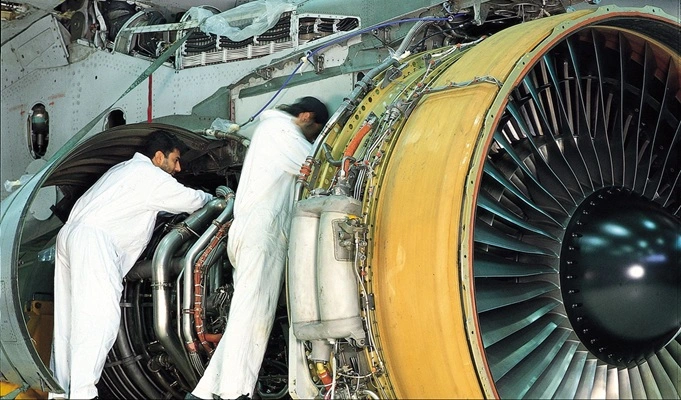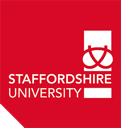
Aeronautical Engineering
Overview
The Aeronautical Engineering BEng (Hons) is a specialised subject vital for future aviation, providing a solid foundation in engineering principles applied to aircraft design and systems. The course curriculum is designed to meet the evolving needs of the aviation industry. It helps students to shape the future of flight.
This course will also teach the design, development, and operation of aircraft and spacecraft, as well as theoretical knowledge and practical skills to excel in this exciting industry. Students will get hands-on experience and work on exciting projects with industry professionals to make a real impact in the aviation world.
Objectives
- Develop a foundation in aerodynamics, aircraft structures, propulsion, and control systems.
- Develop skills for aircraft system design, analysis, and testing.
- To cultivate problem-solving, analytical, and design skills.
- Prepare graduates for leadership roles.
Prerequisites
- Strong background in mathematics, physics, and engineering concepts.
- Interest in aviation and aircraft technology.
- Passion for aerospace and engineering design.
- Commitment to lifelong learning and personal development.
- Strong communication and interpersonal skills.
- Desire for positive impact.
Curriculum Outline
- Materials and Structures
- Thermofluids
- Computing
- Engineering Design and Manufacture
- Aircraft System and Performance Design
- Engineering Mathematics 1
- Engineering Mathematics 2
- Engineering Mechanics
- Risk Analysis
- Structural Design Project
- Engineering Mathematics 3
- Dynamics and Vibration
- Systems Reliability Assessment
- Incompressible Aerodynamics
- Aircraft Structural Loading and Stress Analysis
- Mechanics of Materials
- Compressible Flow
- Control Engineering
- Fixed and Rotary Wing Aircraft Performance
- Electrotechnology
- BEng Project
- Aircraft Stability and Flight Test
- Spacecraft Engineering
- Noise Control
- Gas Turbine Design 1
- Stress and Structural Analysis
- Introduction to Computational Fluid Dynamics
- Sensor Fusion for Intelligent Vehicles
- Aircraft Design
- Gas Turbine Design 2
- Finite Element Methods
- Aerodynamics
- Principles of Composite Materials & Structures
- Flight Control Systems
- Machine Intelligence
- Battery Technology
- University Wide Language Programme
Teaching Method
- Lectures
- Tutorials
- Field trips
- Independent study
- Group work
- Supervision
- Workshops
- Laboratory work
- Practical sessions
Modules
- Aerospace Engineering Principles
- Applications Of Electrical And Electronic Engineering 1
- Engineering Design And Practice
- Engineering Mechanics
- Engineering Thermofluids
- Aerodynamics And Propulsion
- Control System Analysis
- Engineering Mathematics 2
- Engineering Product Commercialisation
- Flight Dynamics And Control
- Mechanical Design And Structures
- Aerospace Engineering Applications
- Aircraft Design Group Project
- Applied Computational Fluid Dynamics
- Engineering Project
- Structural Analysis And Fea
Assessment Methods
- Laboratory
- Coursework
- Teamworking
- Presentations
- Project reports
- Design projects
- Technical assignments
Course Duration
This programme may vary depending on the institutions and countries, but the general standard options in the UK are:
- 03 years full-time
- 04 years full-time (placement)
Facilities
- Wind tunnels
- Anechoic chamber
- Indoor UAV testing
- Structures testing facilities
- Gas-turbine engines
- Eight purpose-built automotive engine test cells
- Hawk aircraft
- 6-axis of motion road and aircraft simulator
- Chassis dynamometer, high and low-temperature fuel cell testing facilities
- Numerous instrumented test vehicles.
- Flight simulators
- Material testing labs
- Aircraft hangars and workshops
- Electrical engineering and telecoms lab
- Power engineering lab
- Thermofluids and aeronautical lab
- Fluid engineering lab
Career Pathways
- Aeronautical engineer
- Aeronautical designer
- Aerospace engineer
- Aerodynamics engineer
- Mechanical engineer
- Structural engineer (Aerospace)
- Flight Test engineer
- Avionics engineer
- Propulsion engineer
- Electronics engineer
- Military aircraft maintenance engineer
- Missile systems engineer
- Unmanned aerial vehicle (UAV) engineer
- Airline maintenance engineer
- Airline systems engineer
- Airline operations engineer
- Aeronautical research scientist
- Aeronautical simulation specialist
- Aeronautical composite materials engineer
- Buyers and procurement officers
- CNC programmers (aerospace industry)
- CAD technician
- Finance graduate schemes
- Senior leaders
Fees and Fundings
- Tuition fees are £29,750 (per year) and may vary depending on the institution.
- Scholarships, grants, and financial opportunities are available.
- Government loan aid is available.
Entry Requirements
- HSC minimum 75% or 4.0 / 5.0 of total GPA.
- International Baccalaureate (IB) Diploma: 28 points overall.
- Successful completion of IFY from a UK institution.
- A-Level requirements are outlined on the course page.
- English language requirements (IELTS or TOEFL).
- Strong communication and interpersonal skills.
Field Work and Internships
- Opportunities for internships with leading aerospace companies, airlines, and defence organisations.
- Field projects on aircraft performance, testing, and maintenance.
Certifications
- Professional Engineer (PE)
- Chartered Engineer (CEng)
- Chartered Professional Engineer (CPE)
- Aircraft Maintenance Technician (AMT)
- Flight Test Engineer
Intakes
Typically, it takes twice a year (fall and spring), but may vary like:
- Fall (September/October)
- Spring (January/February)
- Summer (May/June)
Student Testimony
"I decided to study Aeronautical Engineering because I had a passion for aviation and aerospace and a desire to understand the intricacies of air travel. I was very keen on problem solving and analysing complex situations to get to a solution; this helped me decide to pursue the engineering sector of aerospace." Says - "Ken Yau, Aeronautical Engineering BEng".
Frequently asked questions
Core subjects typically include aerodynamics, aircraft structures, propulsion, control systems, materials science, and computer-aided design (CAD).


